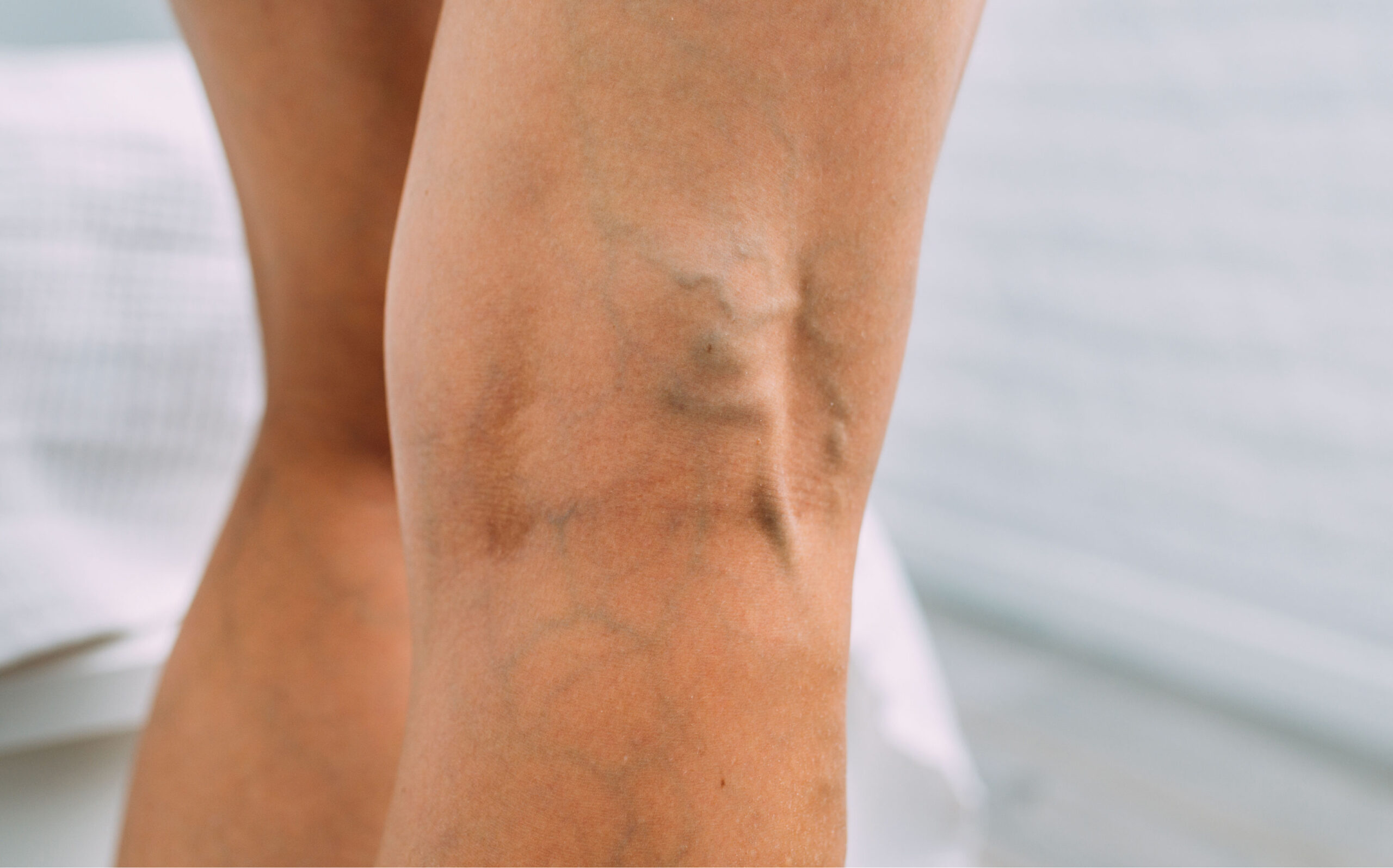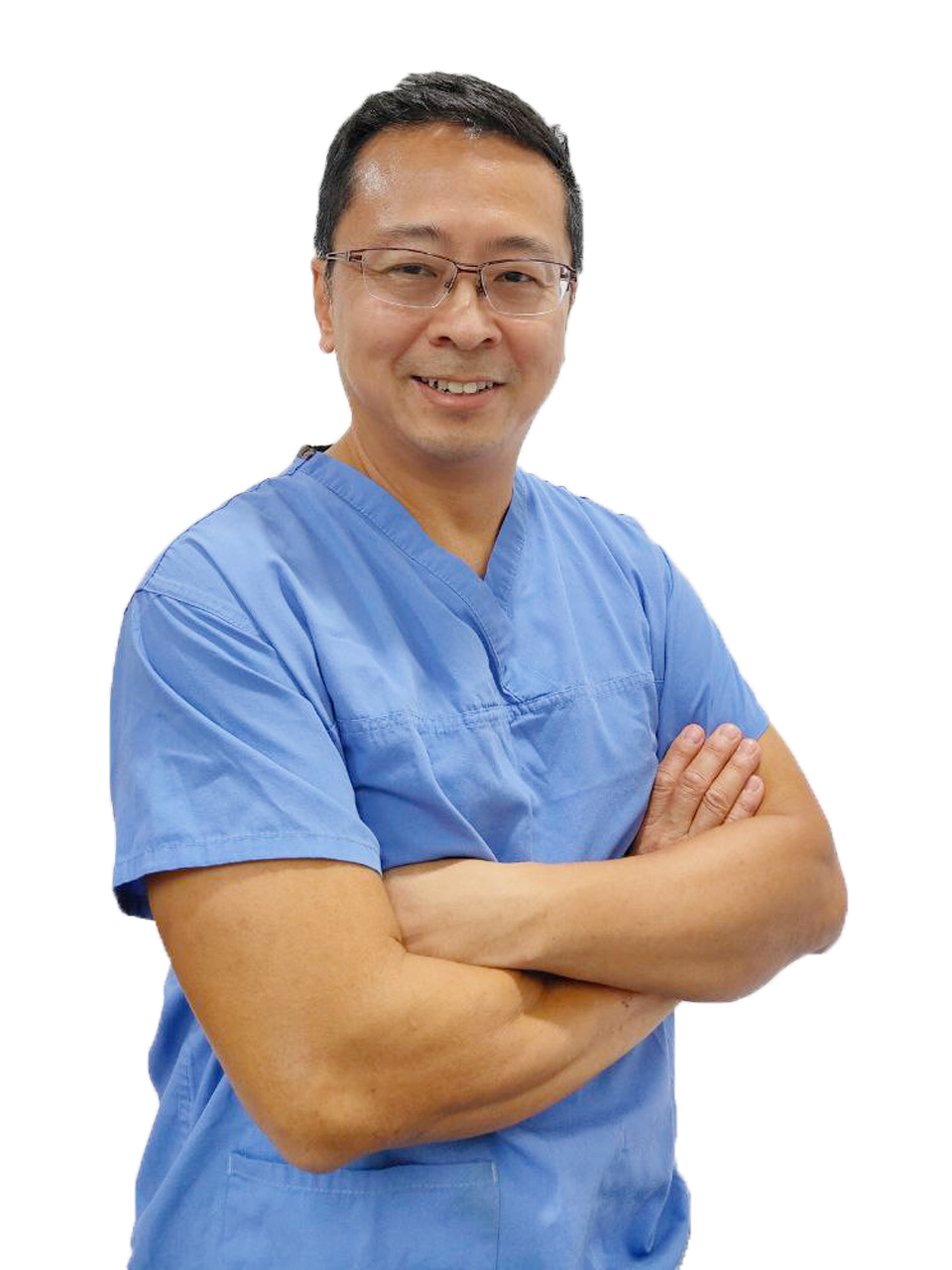
Insight 1
VARICOSE VEINS ARE NOT ‘NORMAL’
Dr Yow Kuan Heng tells us: “Varicose veins are pathological, meaning they’re not normal.”
Varicose veins form in the lower body, typically in the legs, ankles, and feet. These veins will end up with bulging, dilated, and twisted appearances.
Insight 2
VARICOSE VEINS ARE INSTEAD THE RESULT OF VALVES IN THE VEIN NOT FUNCTIONING PROPERLY
Our veins contain structures called valves.
“Normally, these valves act like trapdoors,” Dr Yow explains. “When you walk, your calf muscles squeeze blood back to your heart. When you stand, gravity pulls the blood down, but the valves stop it from pooling in your legs.”
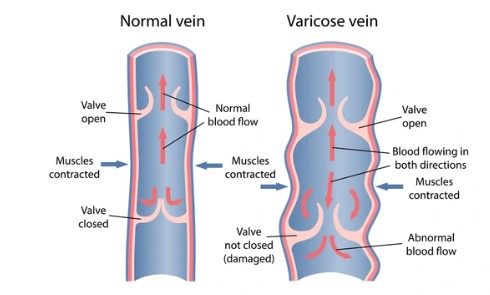
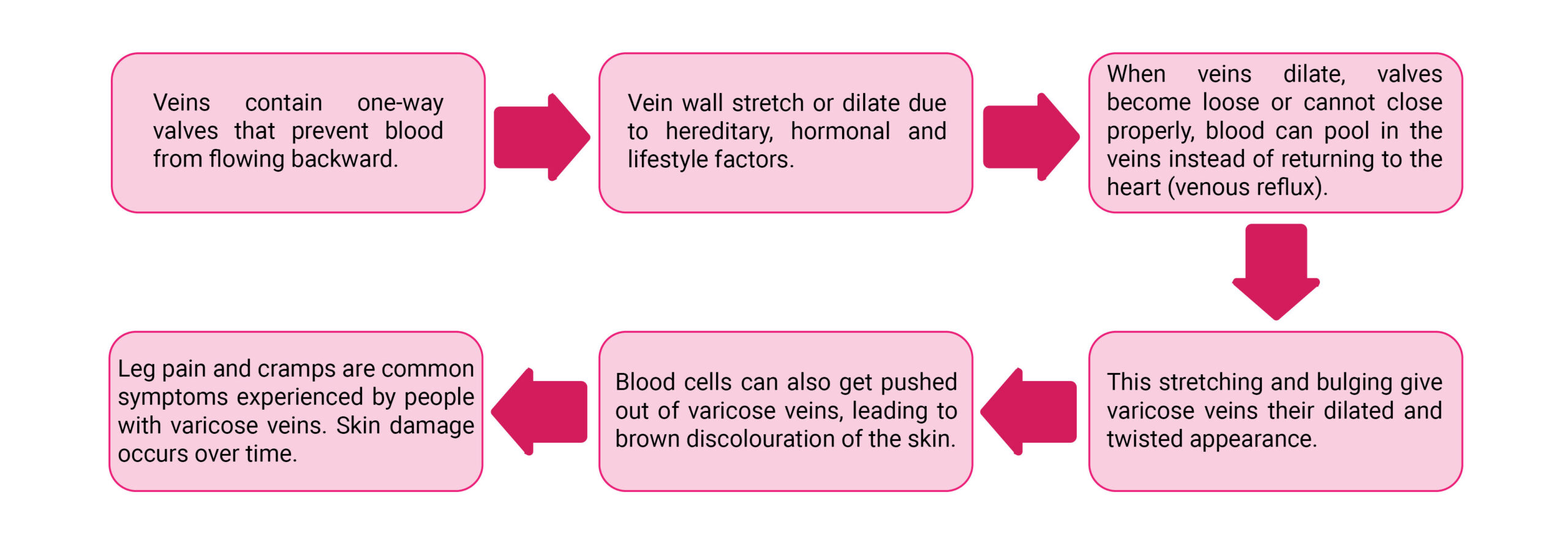
Insight 3
BECAUSE OF THIS, UNTREATED VARICOSE VEINS CAN LEAD TO HEALTH COMPLICATIONS
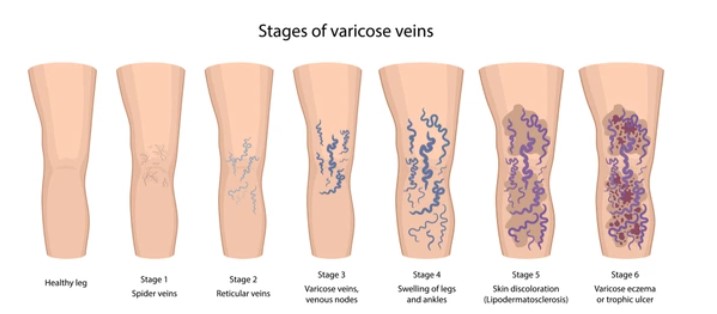
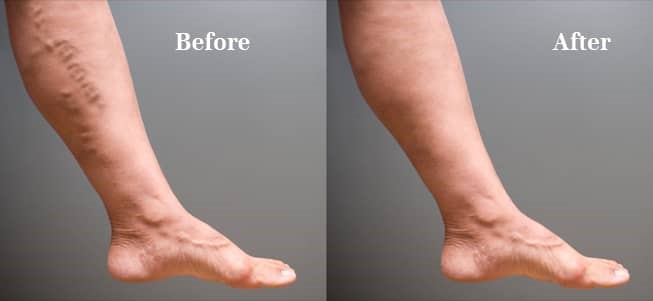
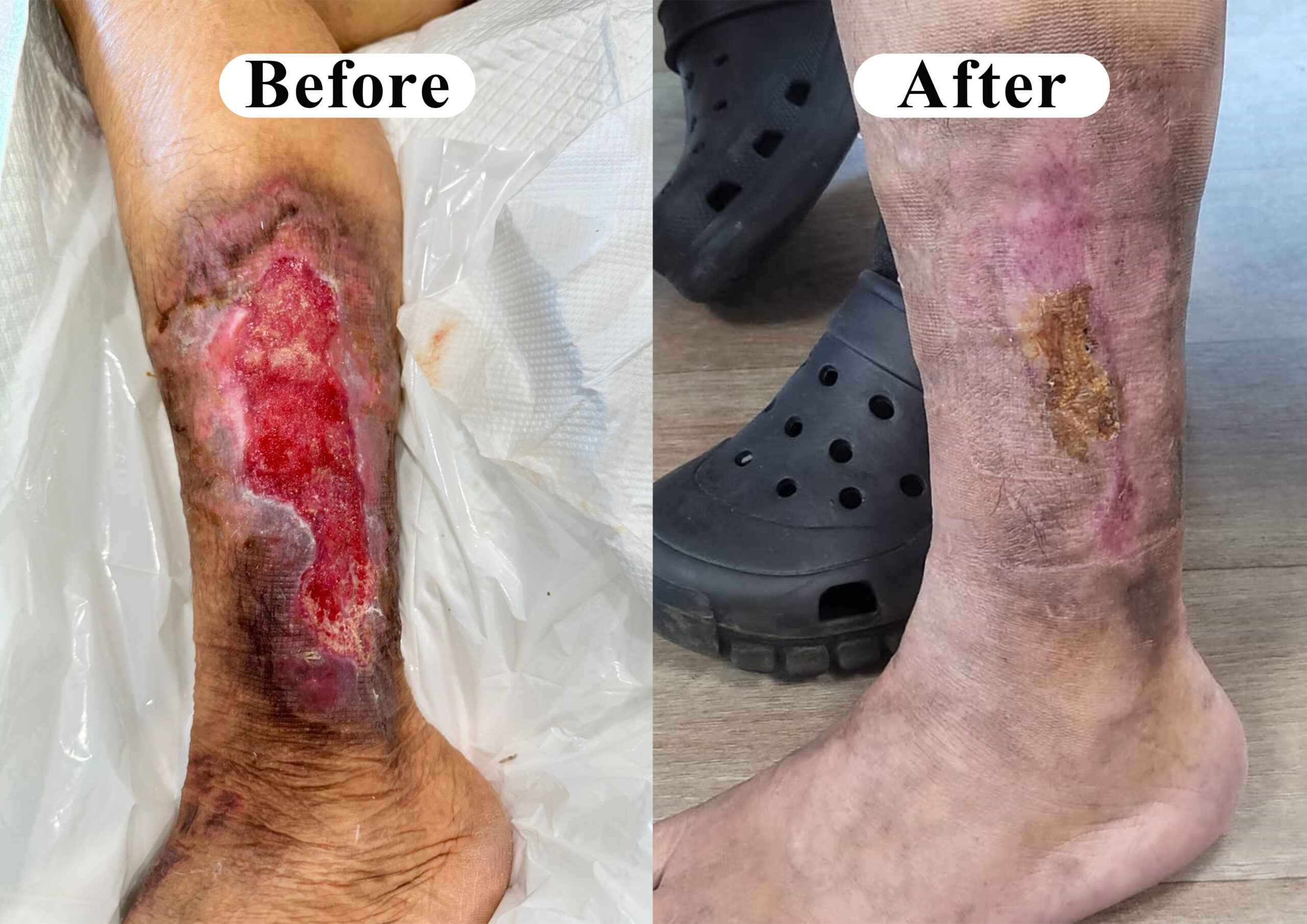
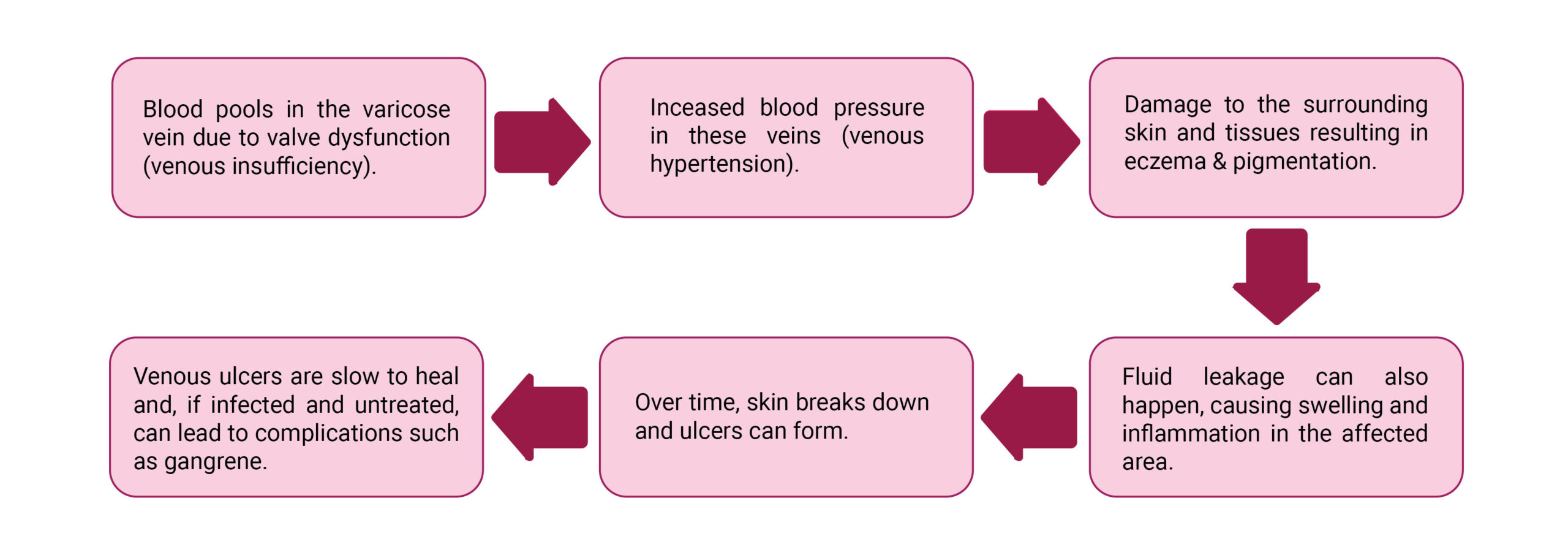
Insight 4
IN THE PAST, OPEN SURGERY IS THE MAIN TREATMENT, BUT THESE DAYS THERE ARE LESS INVASIVE OPTIONS TO CONSIDER
Dr Yow explains: “Nowadays, 99% of the time, we use endothermal methods. These include radiofrequency ablation (RFA) and endovenous laser ablation (EVLA) ”
The affected vein is not removed. “The vein is still there, but the insides of the vein are heated causing the walls to stick together and collapse. Venus reflux therefore eliminated,” Dr Yow elaborates. The endothermal methods such as RFA and Laser are recommended as 1st line treatment for varicose veins by the National Institute for Health and Care Excellence in the United Kingdome (NICE UK). It is also recommended by all major international Vascular guidelines such as the European Society for Vascular Surgery (ESVS) and peer- reviewed research.
Radiofrequency Ablation (RFA)
“RFA reduces the hypertension and stress on the skin caused by venous reflux, allowing the ulcer to heal faster,” Dr Yow tells us. “It also reduces the fluid buildup around the tissues, which is harmful to the skin.”
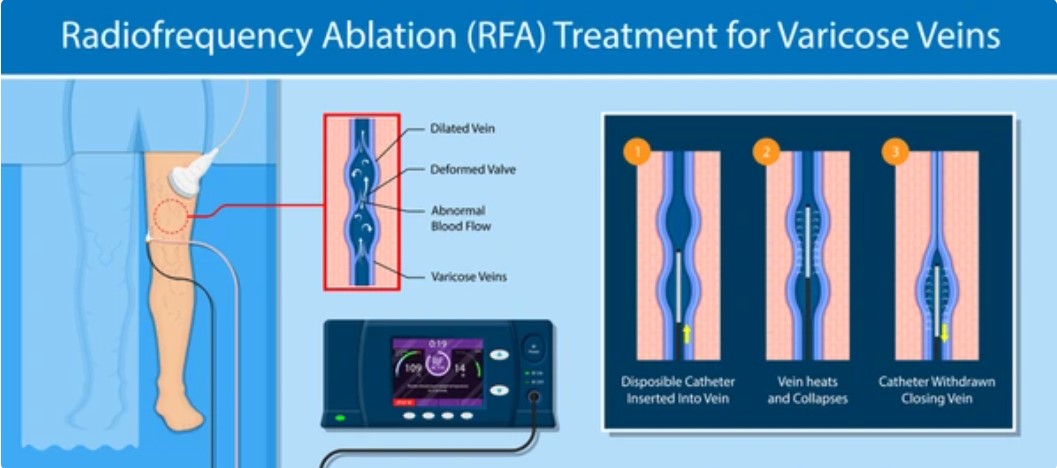
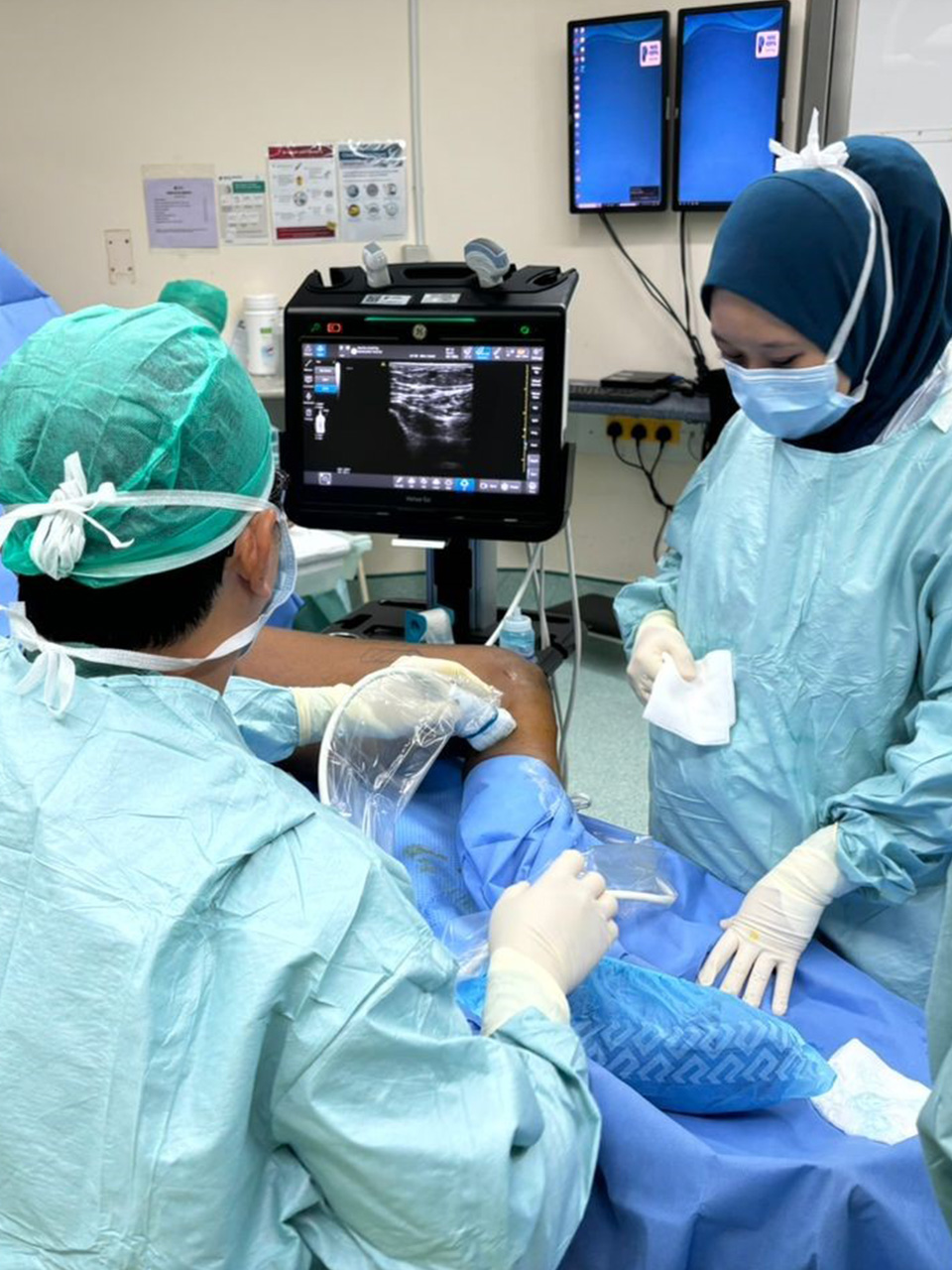
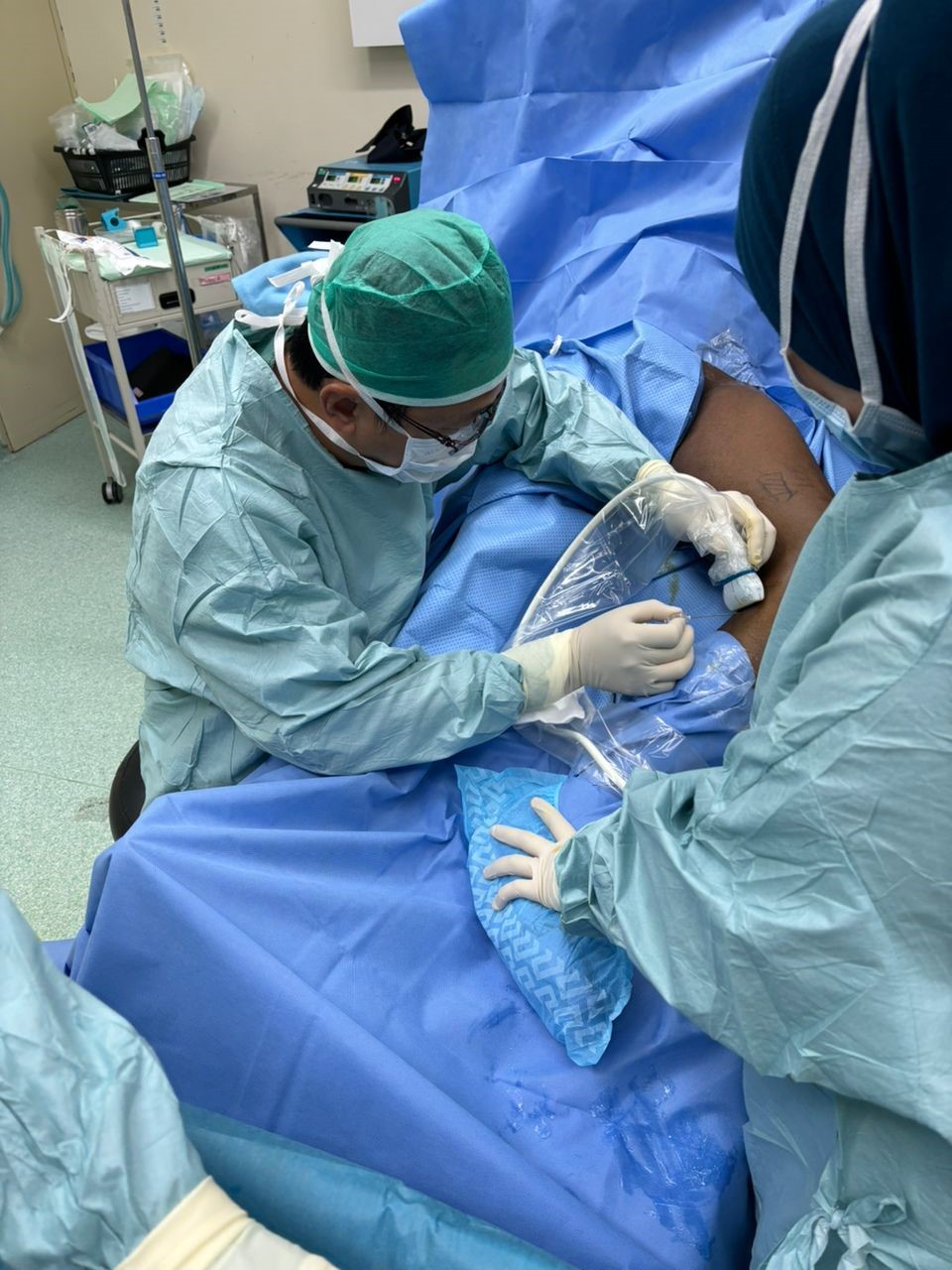
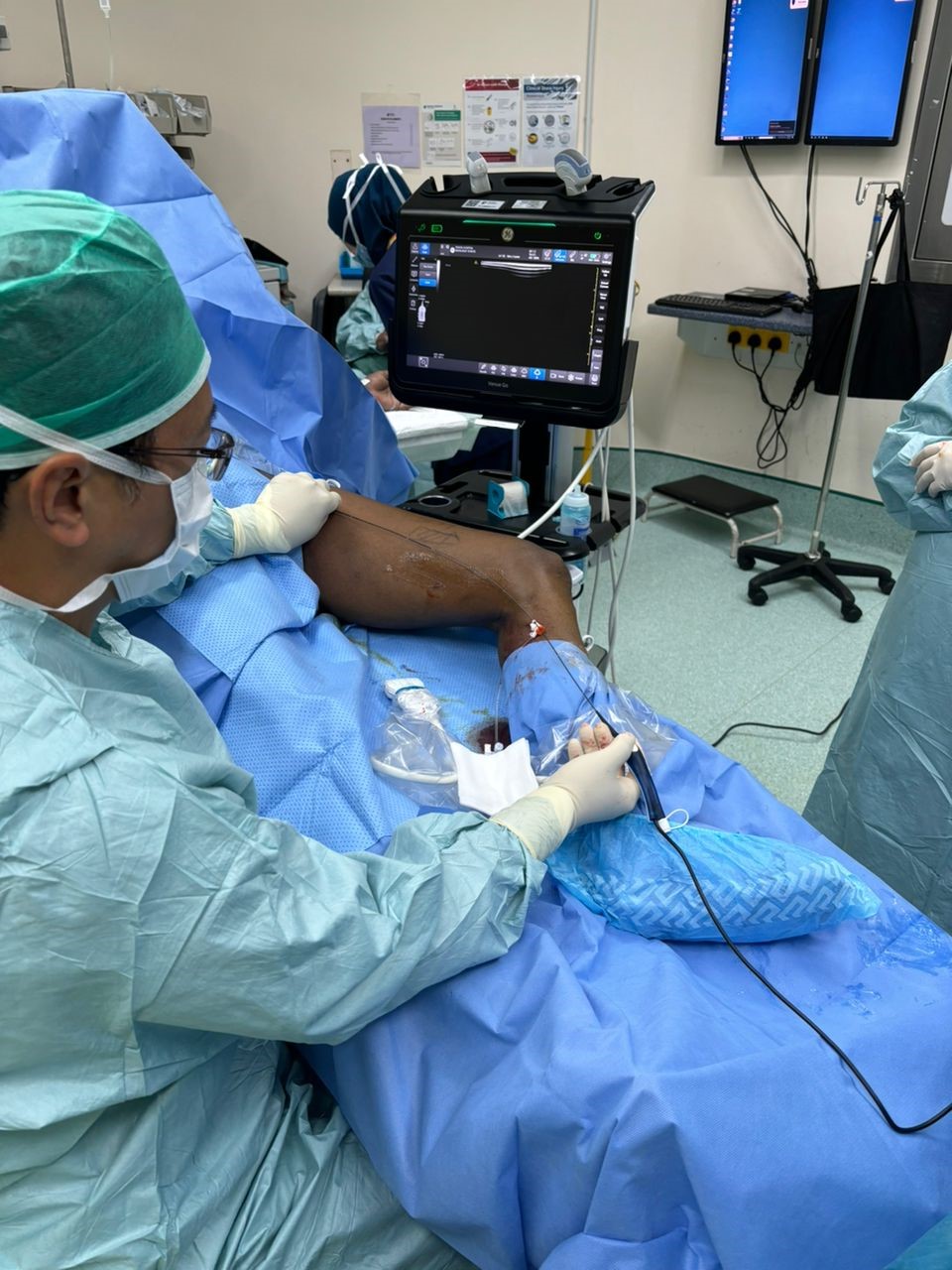
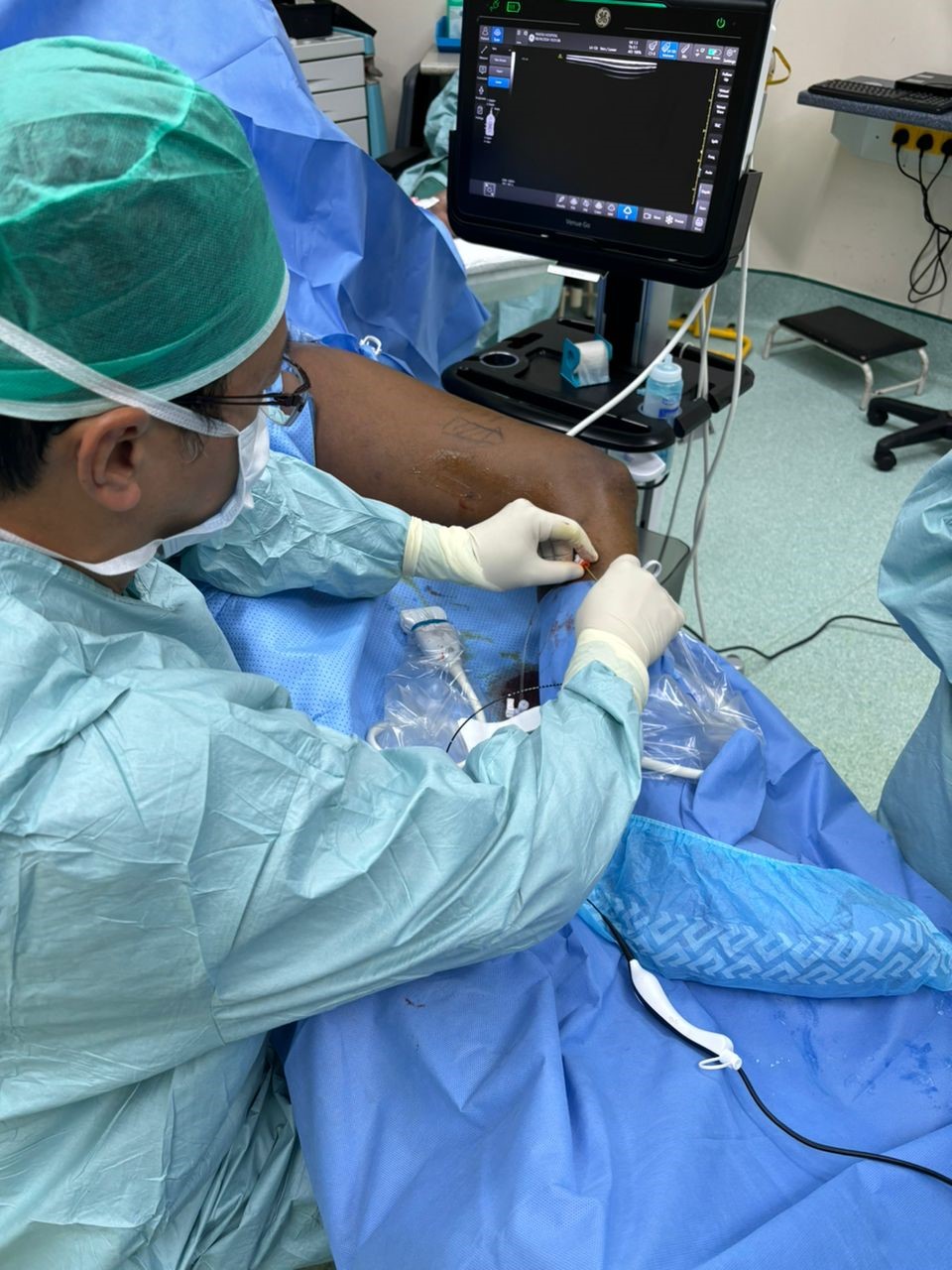
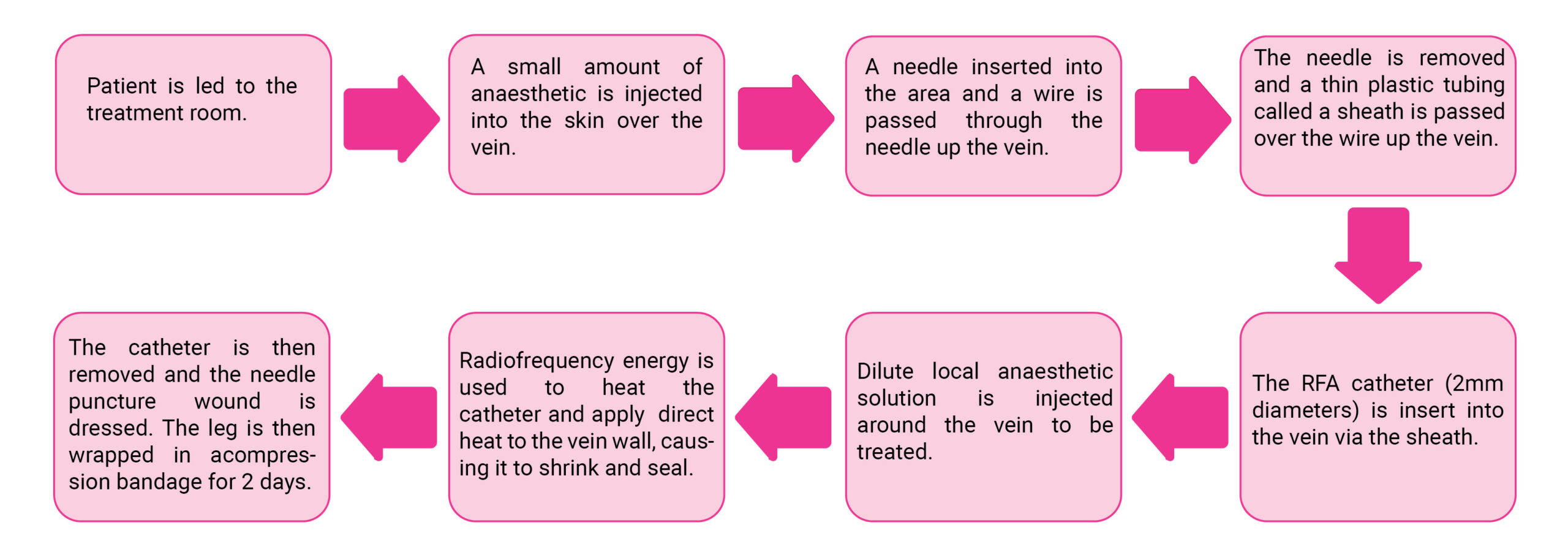
The entire treatment normally takes about 30 to 40 minutes for each leg.
Dr Yow states that he personally prefers RFA over EVLA because the temperatures involved are much lower—120°C in RFA compared to 1,200°C in EVLA.
Due to the high temperatures involved in EVLA, a special treatment room is necessary. As a result, the costs involved in setting up such a room also leads to the treatment cost of EVLA being higher. “RFA has also been shown to cause less pain and is safer,” he adds.
Downtime for RFA. “Most patients can return to normal activities the same day, though I recommend avoiding strenuous activity for a few days,” Dr Yow states.
Potential complications and recurrence. While complications are rare, Dr Yow mentions that they can include infections, bleeding, deep vein thrombosis and nerve injury (pain / numbness)
Deep vein thrombosis is a condition in which blood clots form in the deep intramuscular veins of the leg. Dr Yow reassures us that the risk of this complication after an RFA procedure is very small, however. In all his years of performing RFA, none of his patients had ever come back to him with symptoms of this condition!
Recurrence. Around 20% to 30% of patients experience recurrence within 10 years. “This is because the body is dynamic, and new veins can form or channels reopen,” Dr Yow says.He adds: “However, 70% to 80% of patients have permanent results.” For varicose veins that come back, this can be treated easily with foam injections.
Second line treatment option:
- For some recurrent varicose veins this can be treated with foam injections/sclerotherapy. This is a mild irritant chemical called Sodium Tetradecyl Sulphate (STD) mixed with air to create foam. The foam is injected through a tiny needle to cause the vein to stick together and collapse.
- Open surgery: Sometimes Dr Yow uses open surgery in case where the varicose veins are too twisted to pass an RFA catheter
To minimize the risk of experiencing a recurrence of varicose veins, Dr Yow recommends maintaining a healthy weight and staying active after treatment.
Take Home Message:
- See a Vascular surgeon early as varicose veins cause skin damage and ulcers.
- There are minimally invasive methods now to effectively and safely treat varicose veins.
If you have any concern, do contact us at 03-3375 7799 @ ext 7304/7306.
by Dr Yow Kuan Heng, Consultant Vascular & Endovascular Surgeon.

